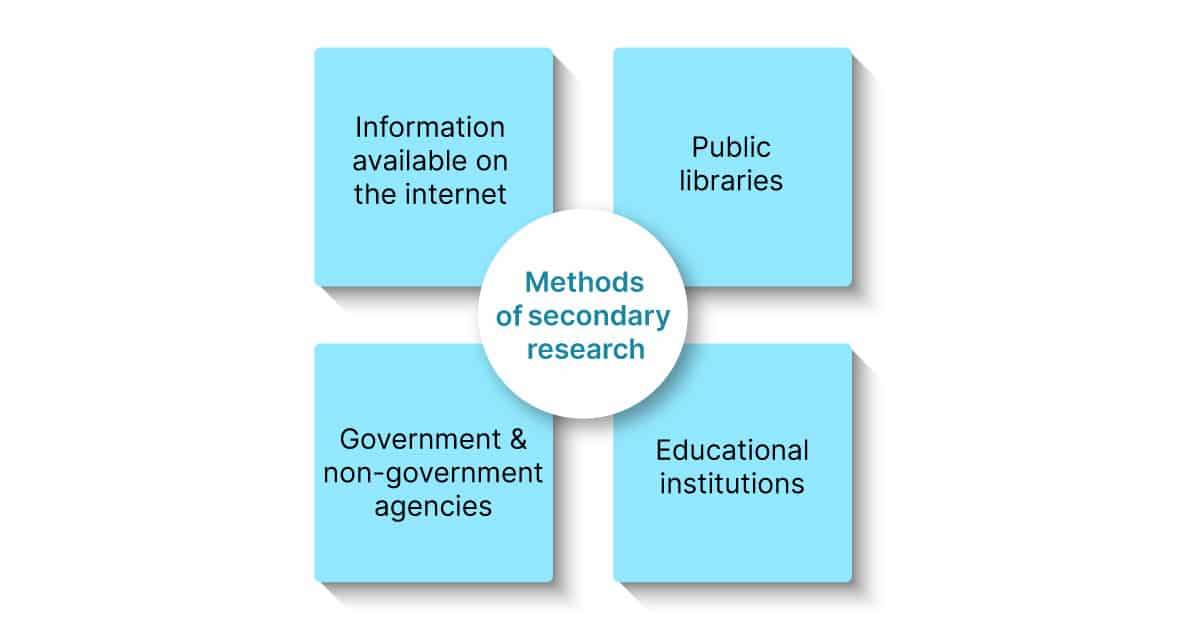
How Apple won at Customer Experience to become the world’s most valuable company
Dive into the Secrets Behind Apple’s Stellar Customer Experience Read Apple’s secret to customer experience Get our in-depth guide to understand what makes Apple a

Find the best survey software for you!
(Along with a checklist to compare platforms)
Take a peek at our powerful survey features to design surveys that scale discoveries.
Explore Voxco
Need to map Voxco’s features & offerings? We can help!
Find the best customer experience platform
Uncover customer pain points, analyze feedback and run successful CX programs with the best CX platform for your team.

We’ve been avid users of the Voxco platform now for over 20 years. It gives us the flexibility to routinely enhance our survey toolkit and provides our clients with a more robust dataset and story to tell their clients.
Steve Male
VP Innovation & Strategic Partnerships, The Logit Group
Explore Regional Offices

Find the best survey software for you!
(Along with a checklist to compare platforms)
Take a peek at our powerful survey features to design surveys that scale discoveries.
Explore Voxco
Need to map Voxco’s features & offerings? We can help!
Find the best customer experience platform
Uncover customer pain points, analyze feedback and run successful CX programs with the best CX platform for your team.

We’ve been avid users of the Voxco platform now for over 20 years. It gives us the flexibility to routinely enhance our survey toolkit and provides our clients with a more robust dataset and story to tell their clients.
Steve Male
VP Innovation & Strategic Partnerships, The Logit Group
Explore Regional Offices

Find the best survey software for you!
(Along with a checklist to compare platforms)
Take a peek at our powerful survey features to design surveys that scale discoveries.
Explore Voxco
Need to map Voxco’s features & offerings? We can help!
Find the best customer experience platform
Uncover customer pain points, analyze feedback and run successful CX programs with the best CX platform for your team.

We’ve been avid users of the Voxco platform now for over 20 years. It gives us the flexibility to routinely enhance our survey toolkit and provides our clients with a more robust dataset and story to tell their clients.
Steve Male
VP Innovation & Strategic Partnerships, The Logit Group
Explore Regional Offices
The ultimate secondary research guide
Upgrade your secondary research with agile market research guide.
SHARE THE ARTICLE ON

Research doesn’t only include gathering data directly from the subject matter using surveys or interviews. You can also rely on existing data to answer your research question. The use of existing data to conduct research is known as a secondary research methodology.
In this blog, we’ll explore secondary research definitions, types, advantages, processes, and when to use them.
Secondary quantitative research is also known as desk research. It includes using the existing data, also known as secondary data. This existing data is then summarized and arranged to increase the overall efficacy of the research. This research method involves collecting data from the internet, government documents or resources, libraries, and other conducted research, etc.
Secondary research is cost-effective as compared to primary research. This is because secondary research uses data that is already existing. In contrast, in primary research, the data is collected by the researcher in person or they collect it with the help of a third party on their behalf.
Researchers use secondary research to accentuate the data points collected via primary research methods like online surveys or CATI surveys. While primary research can be costly, there are online survey tools like Voxco which allow researchers to conduct cost-effective survey research.

The reason why many organizations use secondary research methods is because of their cost-effective nature. Since not every organization can pay large sums of money just for the purpose of market research, they use secondary sources of data and collate it for analysis. Hence, this is why secondary research is called “desk research” as the data for the research can be made available while sitting behind a desk.
We have highlighted some of the popularly used secondary research methods below:
The Internet has become the most popular way of collecting data for secondary research. Here, the data is readily accessible and available and can be easily downloaded with minimum effort. This data also tend to be free of cost or available at a negligible price.
Websites also contain tons of information that can be useful for organizations and businesses. However, it is essential only to collect data from a trusted website as some websites may compromise your system’s safety. Most of the informative information is collected by market research agencies using online surveys & market research tools.
For example, a researcher can find out the number of people using a preferred brand of clothing by a poll conducted by an independent website online.
Another source of acquiring secondary data is through government and non-government agencies. For instance, the U.S. Census Bureau has valuable demographic data that can be useful for researchers.
Researchers may have to pay a certain amount to download or access data with these agencies. However, the data obtained is authentic, accurate, and trustworthy. Most of the information is collected using online survey tools like Voxco.
Understand how easy it is to create, test, distribute, and design the surveys.
Public libraries are also a rich place to gather secondary data from. They have copies of publications of research done before, which can be of good use to the researcher. They also have a wealth of documents containing important information. The services provided in one library may vary from another, though. However, commonly, libraries have documents from government publications, market research papers, business directories, and newsletters.
Gaining secondary data from educational institutions is overlooked by researchers. However, these institutes contain large amounts of market research conducted as compared to any other sector. The data collected from universities is usually for primary research. Business researchers can approach the colleges and request secondary data from them.
on a particular topic from online sources, libraries, or commercial databases is the most inexpensive method of collecting data. The information in these sources can help a researcher discover a hypothesis that they can test.
Here, sources can include information from newspapers, research journals, books, government documents, annual reports published by organizations, etc. However, the authenticity of the sources needs to be considered and examined.
Government sources can provide authentic data but may require you to pay a nominal price to acquire it. Research agencies also produce data that you can acquire at a nominal cost, and this data tends to be quantitative in nature.
Another method that is increasing in popularity is gathering information from commercial information sources such as local newspapers, radio, TV, and magazines or journals. These commercial information sources feature market research data on economic developments in the country, political information, information about demographics, etc.
Let’s look into ways primary research differs from secondary research methodology.
Primary Research | Secondary Research |
The research is conducted by the researcher first hand. The researcher owns the data that has been collected. | Research is based on the collected data from past studies. |
It deals with raw data. | This research deals with data that has already been analysed and interpreted. |
The researcher is highly involved in primary research. | There is low level involvement of researchers in secondary research. |
The data collected in Primary research fits the needs of the researcher. | Existing data may not necessarily fit the needs of the researcher. |
Primary research is costly and time consuming. | Secondary research is relatively cheap, and not time consuming. |
Curious about pricing? Get personalized quotes.
Here are some advantages of using secondary research as your research methodology.
Information that is collected for secondary research is available easily. There are also various sources from which accurate and relevant data can be pooled together. Whereas in primary research, the data is collected from scratch.
The secondary method is less time-consuming and cost-effective because it uses data that is easily acquired and available. Only a minimum expenditure is required to obtain most of the data.
Secondary research methodology gives scope and guidance to researchers to do primary research for their organization.
The secondary methodology is quicker to conduct due to the fact that data is easily available. It can be completed in a few weeks, depending on the amount of data needed or the purpose/objectives of the study.
Here are some limitations of the secondary research method that you must keep in mind.
The credibility of secondary data is questionable as the data is collected from outside sources. The success of the research depends upon the quality of research conducted by previos researchers.
Some secondary research data may be outdated or incompatible with the recent research objective.
Gathering data from multiple secondary sources may not be standardized. This can lead to challenges in data analysis, and the inconsistencies can impact the reliability of the data.
Meet respondents where they are and drive survey completion.
Let’s look into four steps that you can follow to conduct secondary research.
Think about the research question you want answers to. Understand what’s the aim of conducting your research and what you are looking to achieve. Use the understanding to define the research topic.
Since this is secondary research, identify where to find data/information to answer your research question. Narrow down the sources and list people who can help you with the research.
Start assessing the data sources and gather the relevant information. Make sure to check the date, the source’s credibility, and the method used by the researchers.
Compare the data over time periods and different datasets to identify patterns and trends.
Evaluate the data and see if it answers your research question. Explore and dig deeper into the topic to gather all the relevant information.
Knowing when you can use secondary research can save time and effort while also providing valuable insights. Here are some situations gathering data from secondary sources is useful.
See how Voxco can enhance your research efficiency.
Secondary research methodology offers valuable information that can significantly impact your decision-making. The benefits of this methodology are numerous, from cost-effectiveness and time-saving to wider data sources.
It serves as a complementary approach to primary research. This methodology allows you to expand your understanding, validate findings, conduct a feasibility study, and develop well-informed strategies.
Read more

Dive into the Secrets Behind Apple’s Stellar Customer Experience Read Apple’s secret to customer experience Get our in-depth guide to understand what makes Apple a

Free Download: Generate customer journey insights using our customer experience templates. Download Now CX Strategy & Management Hub With the Coronavirus outbreak and subsequent economic

Employee engagement survey questions SHARE THE ARTICLE ON Table of Contents WHAT IS AN EMPLOYEE ENGAGEMENT SURVEY? An employee engagement survey is adopted company-wide, involves

Bad Survey Questions SHARE THE ARTICLE ON Share on facebook Share on twitter Share on linkedin Table of Contents A survey is one of the

In the space of a couple of months, the CoronaVirus (COVID-19) has completely upturned the world as we know it. Academia, Enterprise, Manufacturing, Healthcare –

Internal Validity Transform your insight generation process Create an actionable feedback collection survey process. Download Now SHARE THE ARTICLE ON Share on facebook Share on
We use cookies in our website to give you the best browsing experience and to tailor advertising. By continuing to use our website, you give us consent to the use of cookies. Read More
| Name | Domain | Purpose | Expiry | Type |
|---|---|---|---|---|
| hubspotutk | www.voxco.com | HubSpot functional cookie. | 1 year | HTTP |
| lhc_dir_locale | amplifyreach.com | --- | 52 years | --- |
| lhc_dirclass | amplifyreach.com | --- | 52 years | --- |
| Name | Domain | Purpose | Expiry | Type |
|---|---|---|---|---|
| _fbp | www.voxco.com | Facebook Pixel advertising first-party cookie | 3 months | HTTP |
| __hstc | www.voxco.com | Hubspot marketing platform cookie. | 1 year | HTTP |
| __hssrc | www.voxco.com | Hubspot marketing platform cookie. | 52 years | HTTP |
| __hssc | www.voxco.com | Hubspot marketing platform cookie. | Session | HTTP |
| Name | Domain | Purpose | Expiry | Type |
|---|---|---|---|---|
| _gid | www.voxco.com | Google Universal Analytics short-time unique user tracking identifier. | 1 days | HTTP |
| MUID | bing.com | Microsoft User Identifier tracking cookie used by Bing Ads. | 1 year | HTTP |
| MR | bat.bing.com | Microsoft User Identifier tracking cookie used by Bing Ads. | 7 days | HTTP |
| IDE | doubleclick.net | Google advertising cookie used for user tracking and ad targeting purposes. | 2 years | HTTP |
| _vwo_uuid_v2 | www.voxco.com | Generic Visual Website Optimizer (VWO) user tracking cookie. | 1 year | HTTP |
| _vis_opt_s | www.voxco.com | Generic Visual Website Optimizer (VWO) user tracking cookie that detects if the user is new or returning to a particular campaign. | 3 months | HTTP |
| _vis_opt_test_cookie | www.voxco.com | A session (temporary) cookie used by Generic Visual Website Optimizer (VWO) to detect if the cookies are enabled on the browser of the user or not. | 52 years | HTTP |
| _ga | www.voxco.com | Google Universal Analytics long-time unique user tracking identifier. | 2 years | HTTP |
| _uetsid | www.voxco.com | Microsoft Bing Ads Universal Event Tracking (UET) tracking cookie. | 1 days | HTTP |
| vuid | vimeo.com | Vimeo tracking cookie | 2 years | HTTP |
| Name | Domain | Purpose | Expiry | Type |
|---|---|---|---|---|
| __cf_bm | hubspot.com | Generic CloudFlare functional cookie. | Session | HTTP |
| Name | Domain | Purpose | Expiry | Type |
|---|---|---|---|---|
| _gcl_au | www.voxco.com | --- | 3 months | --- |
| _gat_gtag_UA_3262734_1 | www.voxco.com | --- | Session | --- |
| _clck | www.voxco.com | --- | 1 year | --- |
| _ga_HNFQQ528PZ | www.voxco.com | --- | 2 years | --- |
| _clsk | www.voxco.com | --- | 1 days | --- |
| visitor_id18452 | pardot.com | --- | 10 years | --- |
| visitor_id18452-hash | pardot.com | --- | 10 years | --- |
| lpv18452 | pi.pardot.com | --- | Session | --- |
| lhc_per | www.voxco.com | --- | 6 months | --- |
| _uetvid | www.voxco.com | --- | 1 year | --- |